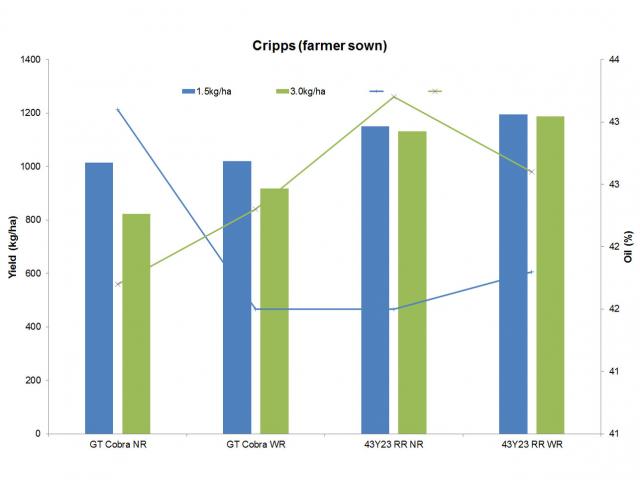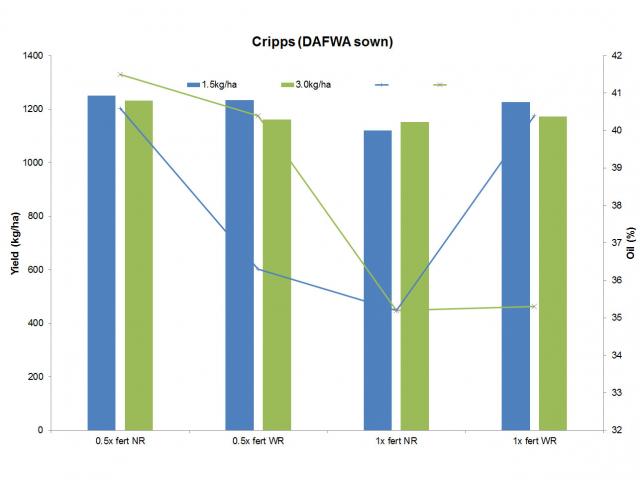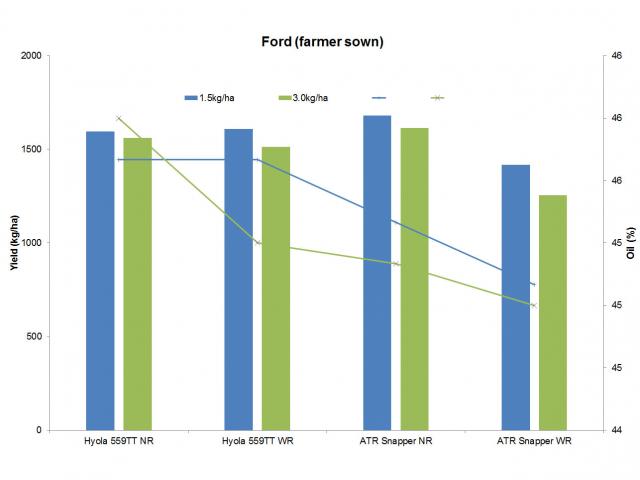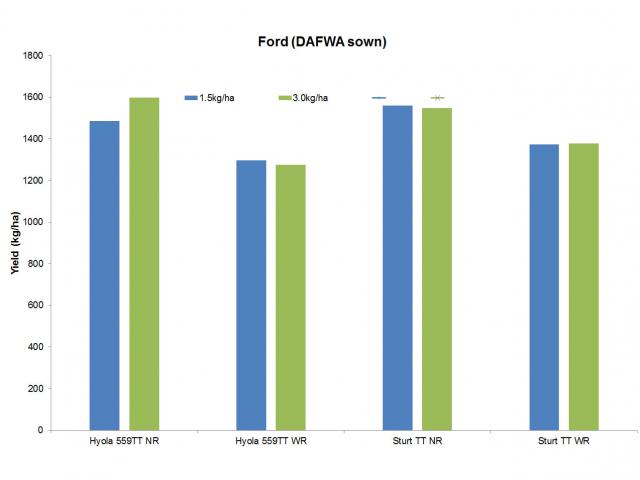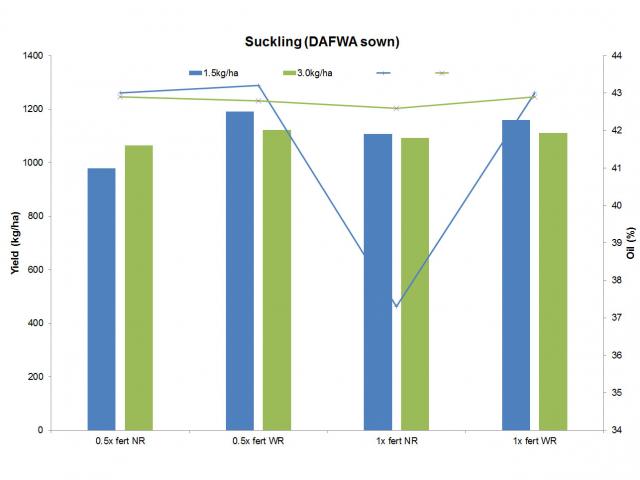Background
Many experiments conducted in Western Australia and the eastern states have shown that canola and lupin should be sown at row spacings as narrow as practicable to maximise yield (Scott et al. 2013). However, previous work in the WA Northern Agricultural Region has shown that lupin can successfully be grown in wide rows in this environment (Harries and French 2007).
Farmers in the Northern Agri Group (NAG), already growing lupin in wide rows, were keen to investigate if wide rows would work for canola in their region. Several farmer-implemented demonstrations were run in 2013 with promising results and this led to a series of three small plot and three farmer trials being run in 2014. The rationale behind relooking at rows wider than the current recommendation of approximately 24cm varies with rainfall zone.
High rainfall zones
Increasingly popular Round-up Ready (RR) hybrids are more vigorous than open pollinated triazine tolerant (TT) varieties so may be more suited to wide rows. Airflow and fungicide efficacy when combating sclerotinia should increase in wide rows.
All rainfall zones
Utilising wide rows may allow reduced seed and fertiliser inputs.
All rainfall zones but particularly the low rainfall zones
Wide rows conserve moisture until later in the growing season and can ‘drought proof’ canola crops; yield stability across years may be more important than maximum yield in good years but failures in drier years.
Results
Over the five replicated trials yield was greater in wide rows at one trial, the same in three trials and less in one.
Biomass was measured at vegetative stages from the farmer sown trials. At the high seeding rate total biomass and individual plant weight was reduced; high rates resulted in competition between the canola plants. Even at this early growth stage the wide row canola had produced a similar amount of biomass to the narrow rows.
As with the earlier biomass measurements at maturity seeding rate had a greater effect than any other treatment with a reduction in biomass at the higher seeding rates at most sites. Increasing row spacing did not cause a significant reduction in biomass at any site.
At all sites, final plant weight at the high seed rate was about half that of the low seed rate. Increasing row spacing did not cause a statistically significant reduction in plant weight at any site.
At three of the five replicated sites, wide row coupled with low seed rate was the highest yielding row spacing to seed rate combination.
Hybrid plant type yielded more than open pollinated. Of the three replicated trials comparing hybrid to open pollinated (OP) varieties, the hybrid plant type yielded more than the OP. This difference was significant at Cripps’ farmer sown trial, 1166kg/ha (hybrid) compared to 943kg/ha (OP) but not significant at the other sites.
Key messages
- Canola grown in wide rows (50-60cm) yielded well enough to consider this row spacing as an option.
- Canola plants were able to compensate for being sown in wide rows - biomass was similar to narrow rows.
- We may be able to reduce input costs, seed and fertiliser by refining the production package in wide rows.
- Wide rows offer benefits of reduced fuel costs at seeding, easy stubble handling and safety of IBS herbicides.
Trial code: 14CH19, 14CH20 and 14CH21

